Management of the Documentation Release by the Programmable Electrical Energy Flow-Individually Made Machine Called Documentomat
Abstract
:1. Introduction
1.1. Background
1.2. Information Management
1.3. Development of a Document Management System
- Business documents must contain predefined data sets. For example, an invoice, an e-invoice containing contractor data-company name, tax identification numbers, amounts due, bank account numbers, etc.
- Business documents, the arrangement and labeling of which depends on the internal arrangements of the company-diagrams and defined layouts.
- The designation and structure of business documents are provided with keywords.
1.4. Communication in the Organization
2. Development of the Concept
- 5-Automated solution could be potentially developed by external company
- 6-Automated solution could be potentially developed within the company
3. Results and Discussion
- it is a power saving solution, easy to operate at low voltage and to cool down with passive cooling;
- the circuit is equipped with GPIO pins (General Purpose Input Output pins) and programmable with popular programming languages, f. ex. Python and C#;
- the microcomputer is powered directly from the micro-USB adapter or power bank;
- the device is equipped with many widely used industry standards, for example Wi-Fi, HDMI, and USB ports enabling easy diagnostics and development, if required;
- the microcomputer has a built-in audio card and jack output, which gives an additional way of informing the user of the state of the device.
| Algorithms 1. The pseudocode of the entire Algorithms |
|
4. Conclusions
Author Contributions
Funding
Institutional Review Board Statement
Informed Consent Statement
Data Availability Statement
Conflicts of Interest
References
- Earl, M. Knowledge Management Strategies: Toward a Taxonomy. J. Manag. Inf. Syst. 2001, 18, 215–233. [Google Scholar] [CrossRef]
- Mokhtar, S.; Hussin, N.; Tokiran, N.S.M.; Wahab, H.; Ibrahim, A. Digital Transformation in Information Management. Int. J. Acad. Res. Bus. Soc. Sci. 2020, 10, 1453–1460. [Google Scholar] [CrossRef]
- Anand, V.; Manz, C.C.; Glick, W.H. An Organizational Memory Approach to Information Management. Acad. Manag. Rev. 1998, 23, 796. [Google Scholar] [CrossRef]
- Schwenk, C.R. Information, Cognitive Biases, and Commitment to a Course of Action. Acad. Manag. Rev. 1986, 11, 298. [Google Scholar] [CrossRef]
- Gałecki, A. Contemporary Conditions of Information Security. Syst. Saf. Hum. Tech. Facil. Environ. 2021, 3, 289–295. [Google Scholar] [CrossRef]
- Buhalis, D.; Law, C.H.R. Progress in information technology and tourism management: 20 years on and 10 years after the Internet—The state of eTourism research. Tour. Manag. 2008, 29, 609–623. [Google Scholar] [CrossRef] [Green Version]
- ISO/IEC 27000: Information Security Management Systems—Overview and Vocabulary, 5th ed.; International Organization for Standardization (ISO/IEC JTC 1/SC 27): Geneva, Switzerland, 2018.
- ISO/IEC 27001: Information Security Management Systems—Requirements, 2nd ed.; International Organization for Standardization (ISO/IEC JTC 1/SC 27): Geneva, Switzerland, 2013.
- ISO/IEC 27002: Code of Practice for Information Security Controls, 2nd ed.; International Organization for Standardization (ISO/IEC JTC 1/SC 27): Geneva, Switzerland, 2013.
- Wang, P. Information systems solutions for transborder data flow problems for multinational companies. Int. J. Inf. Manag. 1993, 13, 29–40. [Google Scholar] [CrossRef]
- Hartmann, L.; Metternich, J. Waste in value streams caused by information flow: An analysis of information flow barriers and possible solutions. Procedia Manuf. 2020, 52, 121–126. [Google Scholar] [CrossRef]
- Hosseini, S.; Fallon, G.; Weerakkody, V.; Sivarajah, U. Cloud computing utilization and mitigation of informational and marketing barriers of the SMEs from the emerging markets: Evidence from Iran and Turkey. Int. J. Inf. Manag. 2019, 46, 54–69. [Google Scholar] [CrossRef]
- Klimecka-Tatar, D. Analysis and Improvement of Business Processes Management—Based on Value Stream Mapping (VSM) in Manufacturing Companies. Pol. J. Manag. Stud. 2021, 23, 213–231. [Google Scholar] [CrossRef]
- Nurmadewi, D.; Er, M. Analyzing Linkage Between Business Process Management (BPM) Capability and Information Technology: A Case Study in Garment SMEs. Procedia Comput. Sci. 2019, 161, 935–942. [Google Scholar] [CrossRef]
- Park, J. Evaluating a mobile data-collection system for production information in SMEs. Comput. Ind. 2015, 68, 53–64. [Google Scholar] [CrossRef]
- Partanen, J.; Kohtamäki, M.; Patel, P.C.; Parida, V. Supply chain ambidexterity and manufacturing SME performance: The moderating roles of network capability and strategic information flow. Int. J. Prod. Econ. 2020, 221, 107470. [Google Scholar] [CrossRef]
- Ricci, R.; Battaglia, D.; Neirotti, P. External knowledge search, opportunity recognition and industry 4.0 adoption in SMEs. Int. J. Prod. Econ. 2021, 240, 108234. [Google Scholar] [CrossRef]
- Chajduga, T. Information security management in an individual documentomat project. World Sci. News 2019, 122, 32–43. [Google Scholar]
- Pietraszek, J.; Radek, N.; Goroshko, A.V. Challenges for the DOE methodology related to the introduction of Industry 4. Prod. Eng. Arch. 2020, 26, 190–194. [Google Scholar] [CrossRef]
- Lu, J.-B.; Liu, Z.-J.; Tulenty, D.; Tsvetkova, L.; Kot, S. Implementation of Stochastic Analysis in Corporate Decision-Making Models. Mathematics 2021, 9, 1041. [Google Scholar] [CrossRef]
- Kuo, J.-Y. A document—driven agent—based approach for business processes management. Inf. Softw. Technol. 2004, 46, 373–382. [Google Scholar] [CrossRef]
- Liu, S.; McMahon, C.; Culley, S. A review of structured document retrieval (SDR) technology to improve information access performance in engineering document management. Comput. Ind. 2008, 59, 3–16. [Google Scholar] [CrossRef]
- Senarathne, C.W.; Wei, J. The impact of patent citation information flow regarding economic innovation on common stock returns: Volume vs. patent citations. Int. J. Innov. Stud. 2018, 2, 137–152. [Google Scholar] [CrossRef]
- Kuryło, P.; Wysoczański, A.; Bonarski, P. Knowledge and Information Management. Syst. Saf. Hum. Tech. Facil. Environ. 2021, 3, 1–10. [Google Scholar] [CrossRef]
- Broek, M.A.U.H.; Teunter, R.H.; de Jonge, B.; Veldman, J. Joint condition-based maintenance and load-sharing optimization for two-unit systems with economic dependency. Eur. J. Oper. Res. 2021, 157, 54. [Google Scholar] [CrossRef]
- Schlichter, B.R.; Buchynska, T. Soft skills of delivery managers in a co-sourced software project. Procedia Comput. Sci. 2021, 181, 905–912. [Google Scholar] [CrossRef]
- Vaio, A.D.; Palladino, R.; Pezzi, A.; Kalisz, D.E. The role of digital innovation in knowledge management systems: A systematic literature review. J. Bus. Res. 2021, 123, 220–231. [Google Scholar] [CrossRef]
- Hadid, W.; Al-Sayed, M. Management accountants and strategic management accounting: The role of organizational culture and information systems. Manag. Account. Res. 2021, 50, 100725. [Google Scholar] [CrossRef]
- Hodel-Widmer, T.B.; Dittrich, K.R. Concept and prototype of a collaborative business process environment for document processing. Data Knowl. Eng. 2005, 52, 61–120. [Google Scholar] [CrossRef]
- Forno, A.J.D.; Pereira, F.A.; Forcellini, F.A.; Kipper, L.M. Value Stream Mapping: A study about the problems and challenges found in the literature from the past 15 years about application of Lean tools. Int. J. Adv. Manuf. Technol. 2014, 72, 779–790. [Google Scholar] [CrossRef]
- Haraldsdottir, R.K.; Gunnlaugsdottir, J.; Hvannberg, E.T.; Christensen, P.H. Registration, access and use of personal knowledge in organizations. Int. J. Inf. Manag. 2018, 40, 8–16. [Google Scholar] [CrossRef]
- Farmansyah, M.H.A.; Isnalita, I. Information and Communication Technology in Organizational Performance of Local Government. Pol. J. Manag. Stud. 2020, 22, 127–141. [Google Scholar] [CrossRef]
- Kalczynski, P.J.; Chou, A. Temporal Document Retrieval Model for business news archives. Inf. Process. Manag. 2005, 41, 635–650. [Google Scholar] [CrossRef]
- Kao, C.H.; Liu, S.T. Development of a Document Management System for Private Cloud Environment. Procedia Soc. Behav. Sci. 2013, 73, 424–429. [Google Scholar] [CrossRef] [Green Version]
- Żywiołek, J.; Rosak-Szyrocka, J.; Jereb, B. Barriers to Knowledge Sharing in the Field of Information Security. Manag. Syst. Prod. Eng. 2021, 29, 114–119. [Google Scholar] [CrossRef]
- Asamoah, D.; Agyei-Owusu, B.; Andoh-Baidoo, F.; Ayaburi, E. Inter-organizational systems use and supply chain performance: Mediating role of supply chain management capabilities. Int. J. Inf. Manag. 2021, 58, 102195. [Google Scholar] [CrossRef]
- Anciaux, N.; Bonnet, P.; Bouganim, L.; Nguyen, B.; Pucheral, P.; Popa, I.S.; Scerri, G. Personal Data Management Systems: The security and functionality standpoint. Inf. Syst. 2019, 80, 13–35. [Google Scholar] [CrossRef] [Green Version]
- Ayaz, A.; Yanartaş, M. An analysis on the unified theory of acceptance and use of technology theory (UTAUT): Acceptance of electronic document management system (EDMS). Comput. Hum. Behav. Rep. 2020, 2, 100032. [Google Scholar] [CrossRef]
- Rolland, K.-H.; Hanseth, O. Managing Path Dependency in Digital Transformation Processes: A Longitudinal Case study of an Enterprise Document Management Platform. Procedia Comput. Sci. 2021, 181, 765–774. [Google Scholar] [CrossRef]
- Grossman, R.; Gu, Y.; Sabala, M.; Zhang, W. Compute and storage clouds using wide area high performance networks. Future Gener. Comput. Syst. 2009, 25, 179–183. [Google Scholar] [CrossRef] [Green Version]
- Chieu, T.C.; Zeng, L. Service-Oriented Approach for Implementing an Extensible Content Management System. In Proceedings of the 2008 IEEE Congress on Services Part. II (Services-2 2008), Beijing, China, 23–26 September 2008; pp. 96–103. [Google Scholar] [CrossRef]
- Heinicke, A.; Liao, C.; Walbaum, K.; Bützler, J.; Schlick, C.M. User Centered Evaluation of Interactive Data Visualization forms for Document Management Systems. Procedia Manuf. 2015, 3, 5427–5434. [Google Scholar] [CrossRef] [Green Version]
- Kapler, M. Barriers to the implementation of innovations in information systems in SMEs. Prod. Eng. Arch. 2021, 27, 156–162. [Google Scholar] [CrossRef]
- Ingaldi, M.; Klimecka-Tatar, D. People’s Attitude to Energy from Hydrogen—From the Point of View of Modern Energy Technologies and Social Responsibility. Energies 2020, 13, 6495. [Google Scholar] [CrossRef]
- Klapita, V. Implementation of Electronic Data Interchange as a Method of Communication Between Customers and Transport Company. Transp. Res. Procedia 2021, 53, 174–179. [Google Scholar] [CrossRef]
- Morrison, J.; Sheng, O.R.L. Communication technologies and collaboration systems: Common domains, problems and solutions. Inf. Manag. 1992, 23, 93–112. [Google Scholar] [CrossRef]
- Tsai, H.P.; Compeau, D.R. Understanding and measuring formal communication quality for technology implementation: A test during the anticipation stage. J. Strat. Inf. Syst. 2021, 30, 101669. [Google Scholar] [CrossRef]
- Zraková, D.; Kubina, M.; Koman, G. Influence of Information-communication System to Reputation Management of a Company. Procedia Eng. 2017, 192, 1000–1005. [Google Scholar] [CrossRef]
- Caldeira, M.; Serrano, A.; Quaresma, R.; Pedron, C.; Romão, M. Information and communication technology adoption for business benefits: A case analysis of an integrated paperless system. Int. J. Inf. Manag. 2012, 32, 196–202. [Google Scholar] [CrossRef] [Green Version]
- Sekhar, S.R.M.; Siddesh, G.M.; Manvi, S.; Dosaya, V. Introduction to Healthcare Information Management and Machine Learning. In Studies in Big Data; Springer International Publishing: Singapore, 2021; Volume 88, pp. 3–22. [Google Scholar]
- Kabak, Y.; Dogac, A. A survey and analysis of electronic business document standards. ACM Comput. Surv. 2010, 42, 1–31. [Google Scholar] [CrossRef] [Green Version]
- Cristani, M.; Bertolaso, A.; Scannapieco, S.; Tomazzoli, C. Future paradigms of automated processing of business documents. Int. J. Inf. Manag. 2018, 40, 67–75. [Google Scholar] [CrossRef]
- Sun, J.; Lei, K.; Cao, L.; Zhong, B.; Wei, Y.; Li, J.; Yang, Z. Text visualization for construction document information management. Autom. Constr. 2020, 111, 103048. [Google Scholar] [CrossRef]
- Stacho, Z.; Stachová, K.; Papula, J.; Papulová, Z.; Kohnová, L. Effective Communication in Organisations Increases their Competitiveness. Pol. J. Manag. Stud. 2019, 19, 391–403. [Google Scholar] [CrossRef]
- Lies, J. Internal communication as power management in change processes: Study on the possibilities and the reality of change communications. Public Relations Rev. 2012, 38, 255–261. [Google Scholar] [CrossRef]
- Barendsen, W.; Muß, A.C.; Silvius, G. Exploring team members’ perceptions of internal sustainability communication in sustainable project management. Proj. Leadersh. Soc. 2021, 2, 100015. [Google Scholar] [CrossRef]
- Verčič, A.T.; Špoljarić, A. Managing internal communication: How the choice of channels affects internal communication satisfaction. Public Relations Rev. 2020, 46, 101926. [Google Scholar] [CrossRef]
- Matuszny, M. Building decision trees based on production knowledge as support in decision-making process. Prod. Eng. Arch. 2020, 26, 36–40. [Google Scholar] [CrossRef]
- Lee, Y.; Yue, C.A. Status of internal communication research in public relations: An analysis of published articles in nine scholarly journals from 1970 to 2019. Public Relations Rev. 2020, 46, 101906. [Google Scholar] [CrossRef]

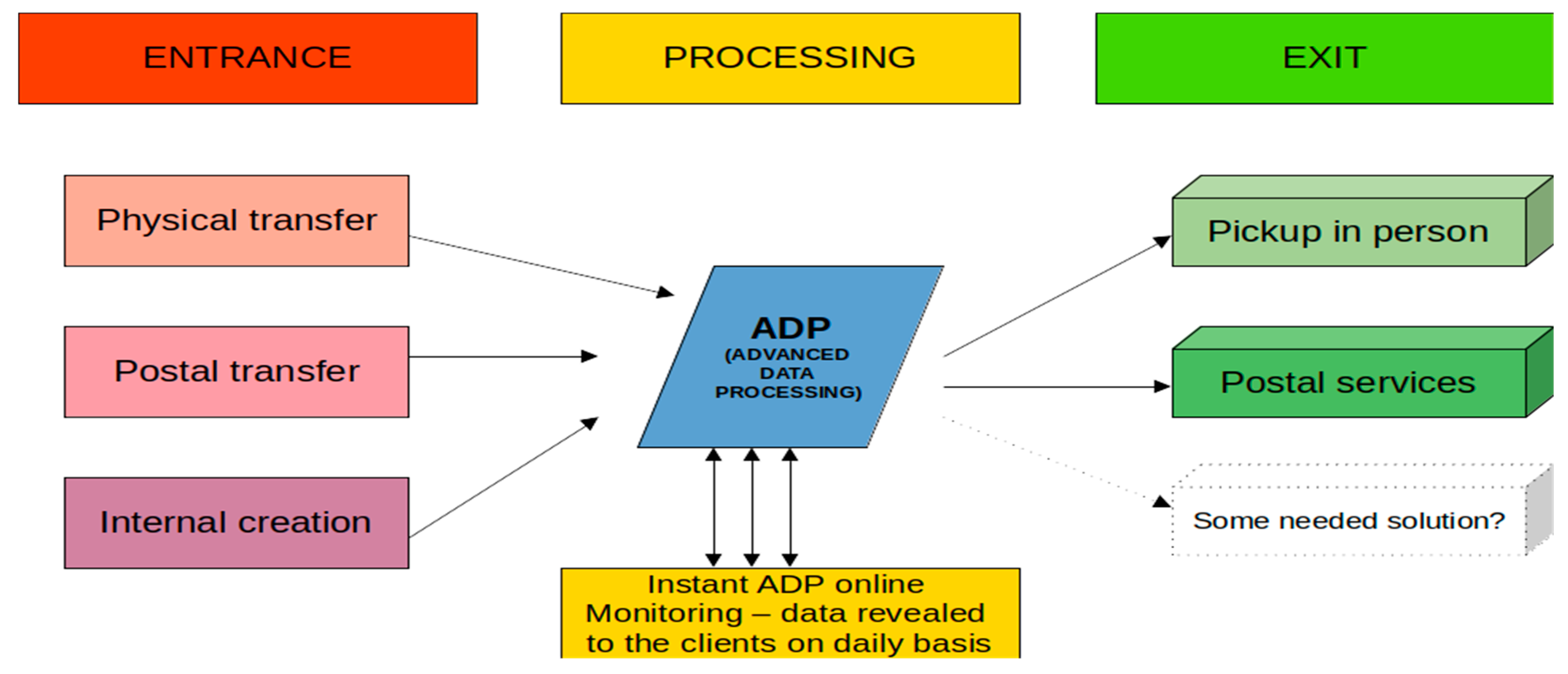

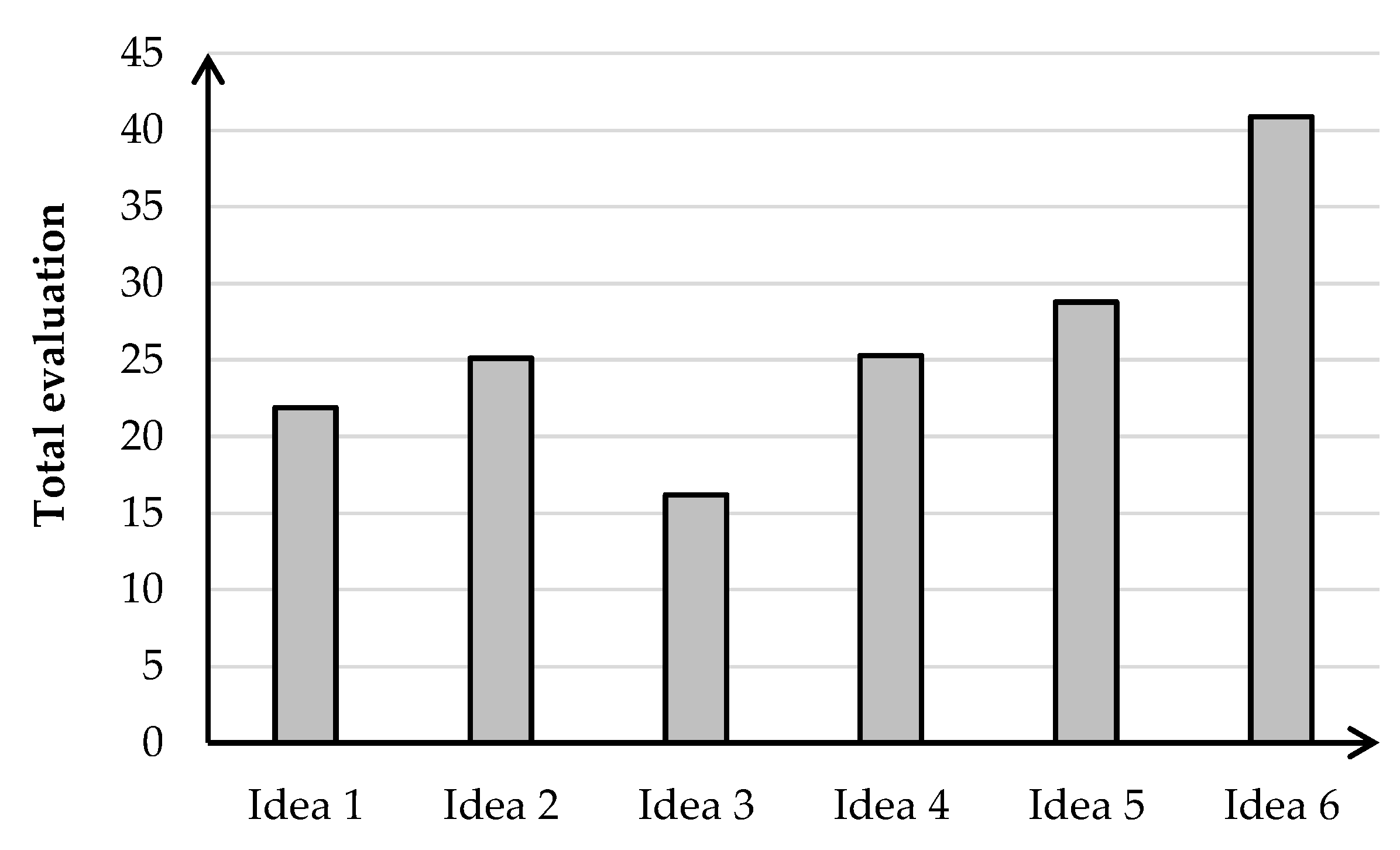
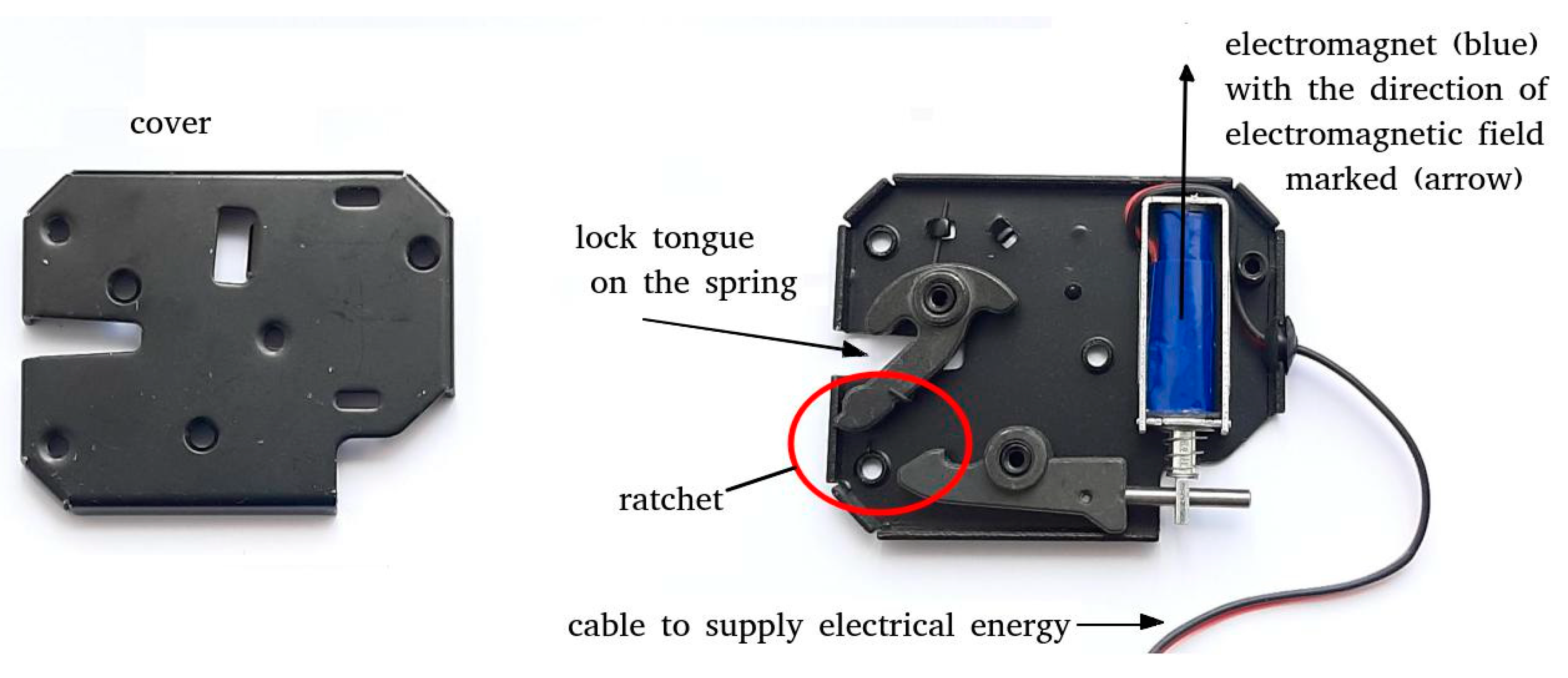
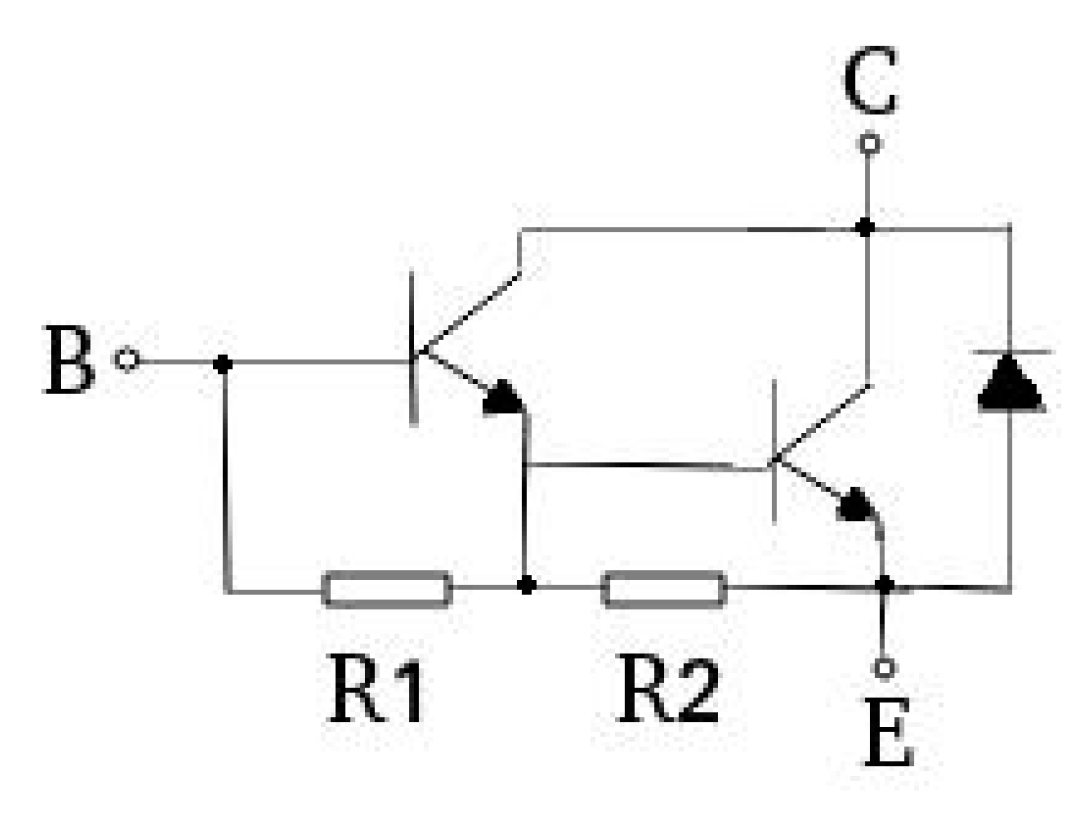
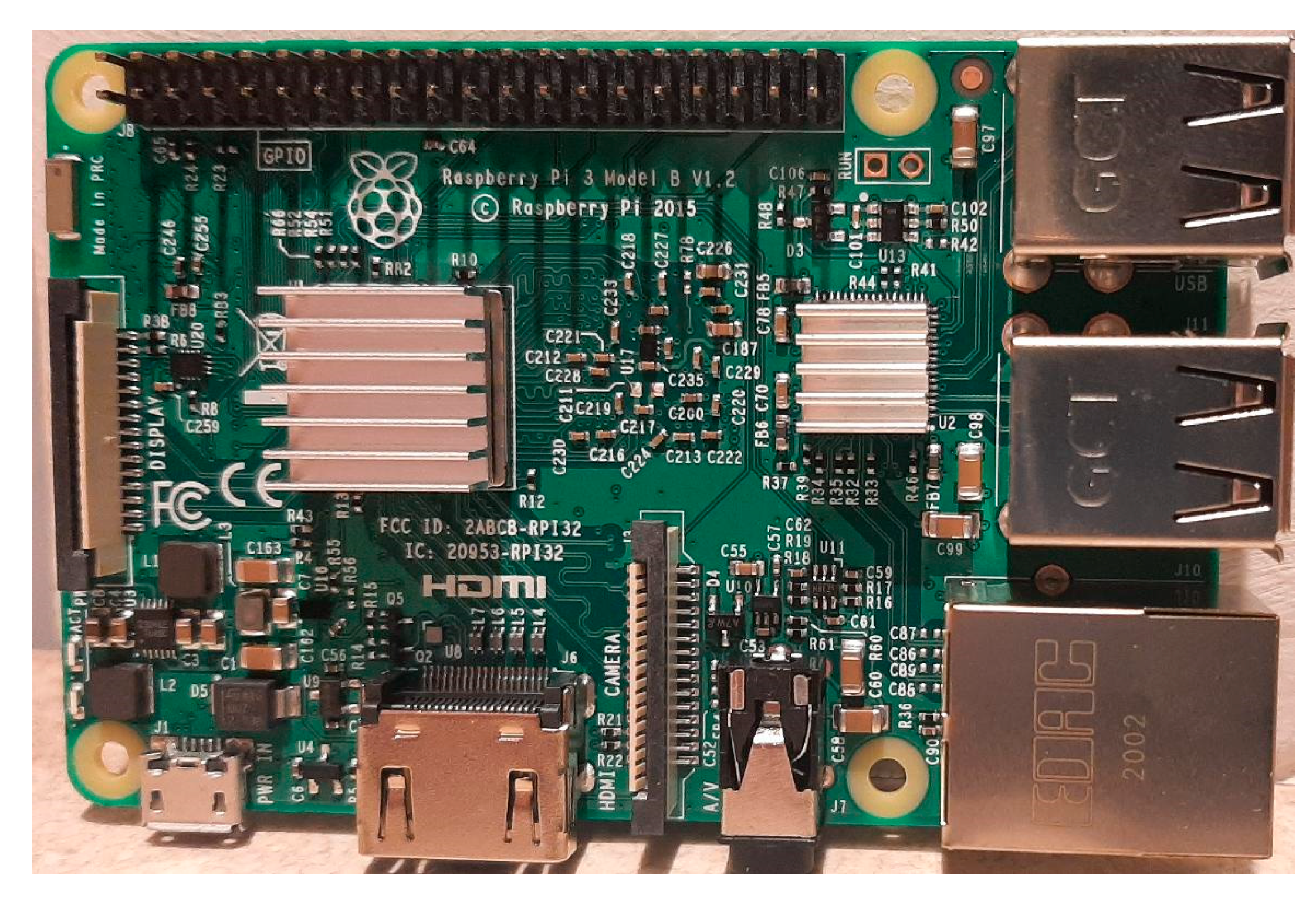

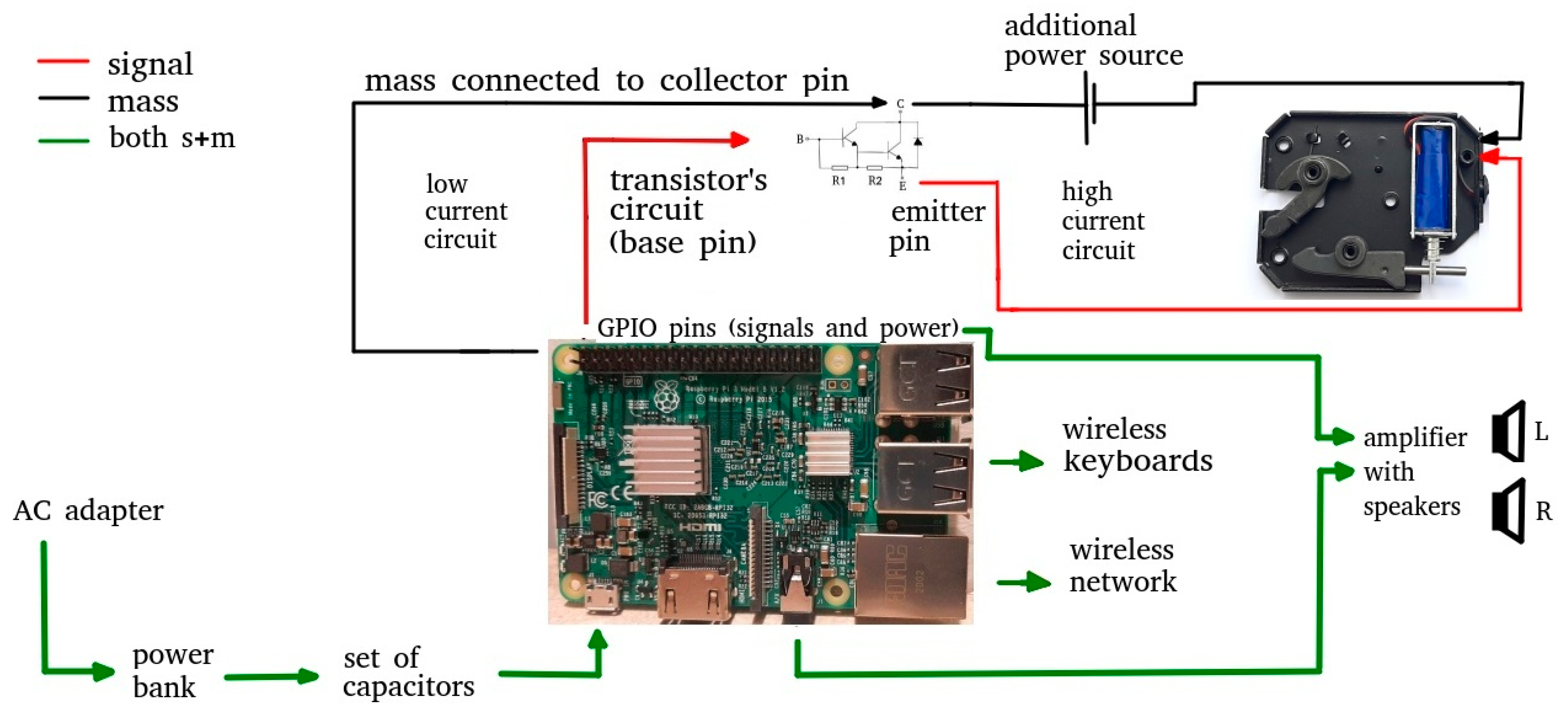
| Number of Idea | The Concept of Solving the Problem |
|---|---|
| Idea 1 | Employees may take the documents home and give it to clients before or after office opening hours. |
| Idea 2 | The company could have its own courier department in order to deliver it to its clients. |
| Idea 3 | The company could dedicate additional employee in order to ensure 24 h document releasing service at the company office place. |
| Idea 4 | Additional cooperation could be established between the company and the security company at the office place—the security could be engaged into document giving process while company office is closed. |
| Idea 5 | Another automated solution could be potentially developed. |
| Idea | Criticism Expressed by Employees |
|---|---|
| Idea 1 | The idea is bad, because it makes employees “working after work”. This could make them less focused on the job in working hours. Another disadvantage is the fact that such a solution requires the another remuneration option to engaged employees, which entails additional costs for the enterprise. |
| Idea 2 | This solution is bad, because it raises costs significantly. As a result of the internal analysis, it was proved that this solution would not be possible to implement without the rise in prices for final clients. The assumption is to find the solution to enrich the company offer and make it more attractive. Not better, but finally more expensive, too. |
| Idea 3 | The main disadvantage of this solution is poor supervision of the single person working in the office alone all the night. Moreover, the additional cost of the dedicated person would have to be paid. |
| Idea 4 | This idea distributes the responsibility between two companies, which leads to entrusting data to persons that influence on is very limited. Besides, implementation of such an idea is also generates significant costs each month. Price increase would be unavoidable. It also transfers the responsibility for delivering documents to external parties, which is more difficult to control. |
| Idea 5 | The main disadvantage of this idea is that it can be very expensive if external company be asked to build a suitable machine, otherwise, it may turn out to be quite time-consuming for the engaged person. |
Publisher’s Note: MDPI stays neutral with regard to jurisdictional claims in published maps and institutional affiliations. |
© 2021 by the authors. Licensee MDPI, Basel, Switzerland. This article is an open access article distributed under the terms and conditions of the Creative Commons Attribution (CC BY) license (https://creativecommons.org/licenses/by/4.0/).
Share and Cite
Chajduga, T.; Ingaldi, M.; Klimecka-Tatar, D. Management of the Documentation Release by the Programmable Electrical Energy Flow-Individually Made Machine Called Documentomat. Energies 2021, 14, 5304. https://doi.org/10.3390/en14175304
Chajduga T, Ingaldi M, Klimecka-Tatar D. Management of the Documentation Release by the Programmable Electrical Energy Flow-Individually Made Machine Called Documentomat. Energies. 2021; 14(17):5304. https://doi.org/10.3390/en14175304
Chicago/Turabian StyleChajduga, Tomasz, Manuela Ingaldi, and Dorota Klimecka-Tatar. 2021. "Management of the Documentation Release by the Programmable Electrical Energy Flow-Individually Made Machine Called Documentomat" Energies 14, no. 17: 5304. https://doi.org/10.3390/en14175304
APA StyleChajduga, T., Ingaldi, M., & Klimecka-Tatar, D. (2021). Management of the Documentation Release by the Programmable Electrical Energy Flow-Individually Made Machine Called Documentomat. Energies, 14(17), 5304. https://doi.org/10.3390/en14175304








